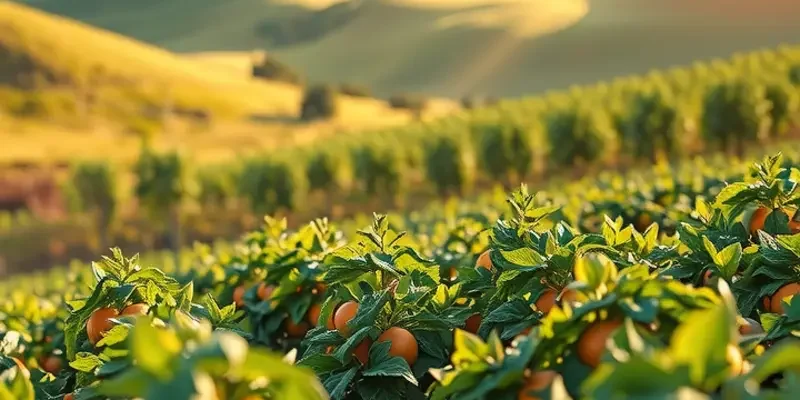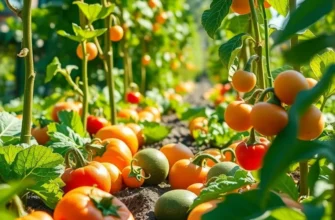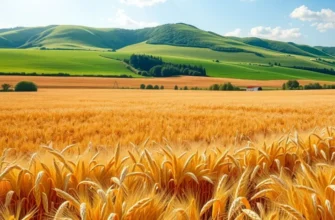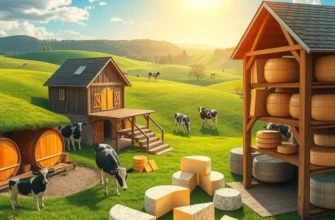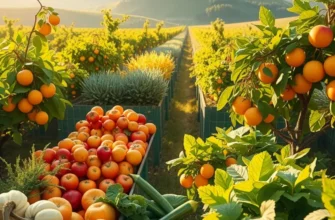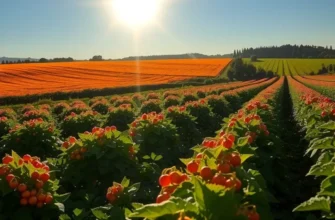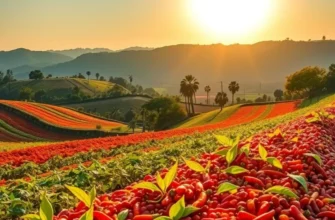Mountainous regions around the world are not just breathtaking landscapes; they are also home to distinct culinary practices that echo their rich cultures and unique local ingredients. From hearty stews simmered over open fires to delicate fermented cheeses, the foods of these elevated terrains tell stories of resilience and adaptation. This exploration uncovers how geography influences these ocean of flavors, inviting food enthusiasts and culturally curious readers to taste the essence of mountain culinary traditions.
From Forage to Feast: Wild Harvesting and Sustainable Practices
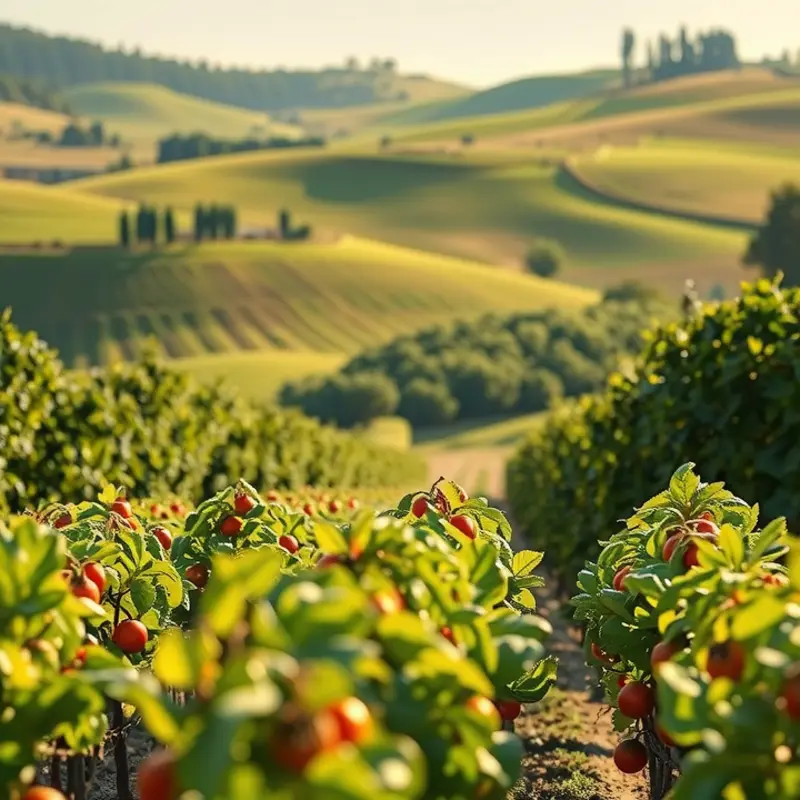
In the lofty heights of mountain regions, foraging is not merely a pastime but a vital practice interwoven with life. The rugged landscapes offer an abundance of wild herbs, mushrooms, and berries that locals have harvested for generations. These communities embrace a sustainable relationship with nature, ensuring that their foraging methods support both the ecosystem and their cultural heritage.
For instance, in the European Alps, locals gather wild mushrooms and juniper berries, crucial ingredients in many traditional dishes. These foraged foods not only bring unique flavors but also connect people to their culinary past. Juniper, with its pungent and refreshing taste, is often used to flavor meats and spirits, providing a distinct Alpine essence. Mushroom foraging tours have become a cultural fixture, blending education and environmental stewardship.
In the densely forested mountains of Japan, sansai (mountain vegetables) are celebrated each spring. Fiddleheads, bamboo shoots, and wild mountain herbs are some prized ingredients. These foraged foods form the backbone of kaiseki, a traditional multi-course meal. Amidst the delicate flowers and crisp shoots, the practice of gathering respects the natural cycle, ensuring regeneration and the health of the forest.
Moving to the Andes, the high-altitude regions host vibrant ecosystems teeming with superfoods like maca root and quinoa. These staples offer sustenance and nutrition, enhancing both wellbeing and flavor. The locals practice ayni, a principle of reciprocity with nature, which guides their harvesting methods.
In terms of adapting to changing climates, mountain communities have shown remarkable resilience. The Himalayan region witnesses variable weather patterns impacting traditional foraging. Yet, the locals have embedded flexibility into their harvesting schedules, ensuring sustainability. They frequently rotate foraged areas, allowing time for regeneration and adopting mixed-cultivation practices to support biodiversity.
These examples are mirrored in modern culinary movements exploring lower-impact food practices. For instance, attempts to reduce food waste by incorporating foraged ingredients align with the principles discussed here. As more people adopt sustainable practices, the rich traditions of mountain regions offer valuable lessons in maintaining a balance between consumption and conservation.
These age-old practices reflect a culinary philosophy where nature dictates what is harvested, ensuring that the landscape is left to flourish. The flavors of mountain regions hold stories of interplay between humans and their environment, encouraging an appreciation for ingredients that sustain both body and soul. Through mindful foraging, these mountain communities continue to cultivate a deep connection with their land, keeping their culinary treasures vibrant and their ecosystems robust.
Hearty and Wholesome: Traditional Mountain Dishes

In the heart of mountainous terrains, food is more than sustenance; it is the essence of life, culture, and survival. These dishes echo the resilience and resourcefulness of communities that have thrived in challenging environments. Crafted to endure the cold and replenish the body, traditional mountain meals are a testament to flavor and functionality, often shared at communal tables that foster connection.
Imagine entering a cozy chalet in the Swiss Alps, where the smell of bubbling fondue envelops you. This iconic dish, a hearty concoction of melted cheese, wine, and garlic, resonates with communal warmth, inviting everyone to gather round and dip crusty bread into the pot. Fondue’s origins trace back to the 18th century, serving as a practical meal for Swiss villagers to sustain themselves during long winters, using readily available aged cheese and bread.
Travel east, and the rugged Himalayas offer the spicy embrace of thukpa, a noodle soup deeply embedded in Tibetan culture. Filled with vegetables, meat, and locally grown spices, thukpa is more than a meal; it’s nourishment for both the body and the soul. Each steaming bowl is a reminder of the frigid altitudes outside, offering a comfort that binds communities together, reinforcing social bonds over communal cooking fires.
In the Andes mountains of South America, hearty stews like locro serve as the backbone of Andean sustenance. Locro combines corn, potatoes, beans, and meat, seasoned with native spices that highlight the region’s biodiversity. Traditionally prepared for festivals or significant events, it reflects a celebration of life and the seasons’ gifts. The act of preparing locro involves family and friends, reflecting a shared heritage and resilience passed down through generations.
Similarly, in the Northern regions of Japan, the wholesome dish known as kiritanpo warms families during harsh winters. Made from cooked, mashed rice formed around wooden skewers, roasted, then simmered in a savory broth with vegetables and chicken, kiritanpo represents an age-old practice of using every available resource wisely. This dish thrives in Akita prefecture, representing a fusion of history and culinary ingenuity.
These traditional dishes are not only about survival but also about the cultural echoes they carry. The ingredients used often tell stories of adaptation and innovation, utilizing what’s readily available in mountainous environments to create meals that are intensely flavorful and satisfying. Across cultures, these dishes celebrate the seasons, marking harvests and religious festivities as times for gathering and giving thanks.
As we savor the stories and flavors embedded in these meals, it’s essential to recognize their role in preserving historical practices while adapting to modern times. Exploring these culinary traditions offers insight into diverse ways of thriving against nature’s extremes, where each hearty bite preserves a piece of history, a thread of community, and the priceless art of mountain living. To delve deeper into how such traditions interact with broader culinary influences, consider exploring global pastry traditions, where mountain cuisines leave their mark on a wider gastronomic canvas.
Final words
Mountain regions offer a unique lens through which the world of culinary exploration can be enriched. From the sustainable foraging of local flora to the preparation of robust dishes that reflect climate and culture, these practices highlight the resourcefulness of the peoples who call these elevations home. Engaging with these traditions not only allows one to discover delicious flavors but also weaves a deeper understanding of human connection to nature and heritage. As you embark on your culinary journey, let the mountains inspire your palate and encourage you to embrace new dishes from different corners of the globe.

